When it comes to blackfishing, there's nothing quite like the simplicity and satisfaction of using bait that you’ve gathered yourself. It’s a cheap and effective way to fish, and there’s a certain pride that comes from knowing you’ve done it all on your own—from gathering the bait to landing that feisty luderick. Let me walk you through some of the basics, as well as a few tricks I’ve picked up over the years.
Gathering Bait
Blackfishing is one of those pursuits where your bait is often just a stone's throw away. The beauty of it is that the bait—whether it’s stringy ribbon weed or cabbage—is freely available along most rock platforms and ocean rock pools. You might find some in estuary systems and rivers too, but it’s generally a bit harder to come by there.
Now, there are two main types of weed you’ll be looking for: string weed and cabbage. String weed is more common in rivers and estuaries, but some ocean rock pools have it too. Cabbage is easier to find along the coastal rocks and beach headlands—it’s just about everywhere. But remember, when you’re harvesting your weed, take only what you need. If there’s enough, grab a bit extra for burley, but don’t overdo it. The weed tends to die off quite a bit during the colder winter months, so be mindful of that.
When it comes to storing your weed, don’t be in a rush to squeeze all the water out. It’s better to let it drain naturally, but if you’re in a hurry, a gentle squeeze will do. Lay the weed out on some newspaper or a hessian bag, fold or roll it up, and tuck it into a bag. You can keep it in the bottom of the fridge for up to a week, but trust me, fresh is always best.
Burley
Once you’ve sorted out your bait, chop up the rest finely and get ready to make some burley. I’ve found the easiest way to mix burley is to head to a dry sand beach. Dig up a nice pile of sand, then grab a handful of your chopped weed mix and place it on top. Keep picking it up, rubbing it between your hands until it’s well mixed. When you’ve got a good batch, put it into a bucket. When you arrive at your fishing spot, add enough water to wet the sand so you can mold it into little burley bombs. These will keep the fish hanging around long enough for you to hook one.
Rigging Up
When it comes to rigging up for blackfish, I’m a firm believer in keeping things light and simple. I prefer a rod around 10 to 12 feet long, paired with a line in the 6lb to 10lb range. The length of the rod is crucial—it helps you steer the fish away from any nasty structure when they start to fight dirty, which blackfish love to do. My go-to reel is an Alvey sidecast, but an eggbeater will do the trick too. I stick with 10lb mono line because I like the stretch it offers when those big blackfish decide to give you some stick. They’ve got soft mouths, and that little bit of give in the line can make all the difference.
Now, let’s talk about the rig. I usually go with a size 10 hook, and I’m partial to a two-hook setup. This lets me test different depths and baits—maybe cabbage on one hook and string weed on the other. Start by threading your stopper onto the line, followed by the float, a small ball sinker, and then your swivel. If you’re using a two-hook rig, go for a three-way swivel. Use a lighter trace or leader—something in the 4lb to 6lb range—and keep the length between 150mm to 200mm. Then, add another small ball sinker and another swivel. Your second trace should be about 100mm to 150mm long, and you can vary the lengths depending on the conditions.
It’s all about trial and error at first when it comes to sinker weights, but always keep the bottom weights heavier. This helps with casting and keeps the float sitting nicely in the water. I’m a big fan of removable split shot weights for fine-tuning the float—can’t recommend them enough. The goal is to achieve neutral buoyancy, where the float sits just right and is sensitive enough that it takes very little to pull it under. This setup takes some practice, so keep an eye on how the float behaves in different conditions.
Fishing Spots
When you’re scouting for fishing spots, look for areas with good weed and kelp beds. That’s where the blackfish will be. Most ferry wharves and jetties are prime luderick territory, as are breakwalls and shorelines with plenty of kelp. If you’re fishing from the ocean rocks, focus on gutters and fish the edges of the wash.
Baiting Up
Baiting up properly is half the battle when it comes to blackfishing. If you’re using string weed, take a thin piece with a couple of strands and start by leaving about 10mm at the bottom of the hook. Wind it up the hook three turns, keeping it tight. Then, give it a couple of turns around the line section, twist it to firm it up around the hook and line, and repeat down the line. Finish by threading the last strands over the hook barb and pinching off any excess to leave a tail of about 5mm to 15mm, depending on how the fish are biting.
When using cabbage, if it’s the thin, slender type, you can use a similar method. For the larger leaf variety, fold a bit of the leaf on the end, thread it onto the hook, pass the hook through a couple of times, and use a half-hitch loop to secure the top of the bait to the line.
Whatever bait you’re using, remember that blackfish have small, soft mouths. You don’t want big clumps of bait on your hook—presentation is key. A thin, straight bait with a little tail fluffing out in the water is what you’re aiming for.
Fishing
When you first start fishing, set your stopper so the float sits too deep, with the sinkers resting on the bottom. Then, gradually move the stopper until the float rights itself—this means you’re just off the bottom, which is where you want to be. If you don’t get any hits within a few drifts, adjust the depth and try different areas—closer in, further out, or near pylons and walls. Keep an eye on your stopper depth, as it can shift if it catches on the rod tip or a runner, changing your target depth without you realizing it. This can be frustrating, especially if you suddenly stop getting bites.
Blackfish tend to feed actively at first light, but they’ll bite throughout the day as well. The key is to find the right depth and stick with it. Burley can help bring the fish on the bite or keep them in the target zone. Use the same weed as your bait, chopped very fine and mixed with sand, to make little burley bombs. But don’t overdo it—you want to tempt the fish into taking your bait, not fill them up on the free stuff.
As you fish, take note of how your float reacts in normal conditions. This will help you recognize when something’s not quite right—whether it’s wave action, current, or hooking some bottom structure. Keep an eye on the mainline leading to your float tip, and maintain just enough slack so you can lift the rod to strike if needed. When your float goes down—or exhibits any unusual movement, like slight jerks, sideways drifting, or even lifting—it’s time to strike. Blackfish bites are often referred to as “downs” because the float typically sinks when they take the bait, but it doesn’t always go down. Sometimes it just stops drifting or moves sideways—these are all signs that something is happening below the surface.
When you get a bite, wait about 5 to 10 seconds, then lift the rod firmly to set the hook. Be careful, as blackfish have small, soft mouths, and too much force can pull the hook out. If your float starts to rise before you strike, wait for the fish to grab the bait again before setting the hook.
Playing and Landing the Fish
Once you’ve hooked a blackfish, the real fun begins. They’re strong fighters, and you’ll need to play them carefully to avoid losing them. Steer the fish away from structure, and gently work it to the surface. Blackfish have powerful tails and will give you a good run for your money. As the fish tires, guide it to the surface where it will splash around on its side, shaking its head. It’s crucial to keep the fish in this position—don’t lift its head out of the water, and don’t let it drop back down. If it does, it will swim upright and likely make a dash for the nearest structure.
Use a net to land the fish, and remember that the legal size limit is 25cm, but this will increase to 27cm with a limit of 20 as of September 3, 2007. Put your catch into a keeper net to keep it alive until you’re ready to clean it.
Cleaning Your Catch
After a day of fishing, it’s important to properly clean your catch. Start by bleeding the fish—cut their throat and bend the head back a bit before placing them back in the keeper net. After about five minutes, retrieve them, scale, and gut them. Make sure to remove the black lining from the stomach wall, as this can taint the flavour of the fish if left in. This is one of the reasons why you’ll often hear people say that blackfish from the fish shop have a “dirty” taste—they weren’t cleaned properly. When done right, blackfish have a beautiful flavor that ranks among my favorite eating fish.

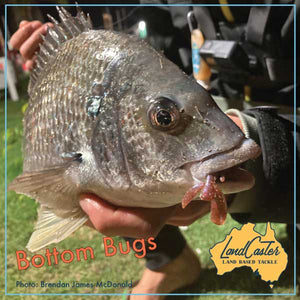
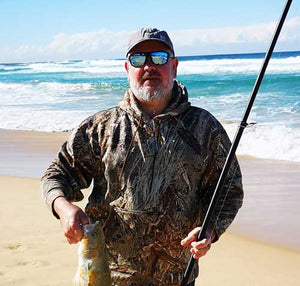
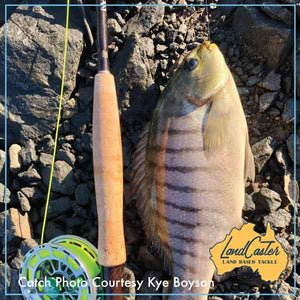
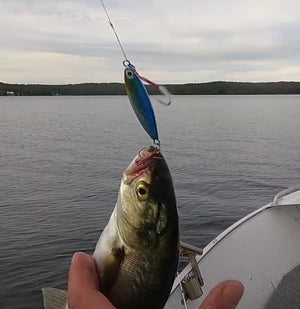
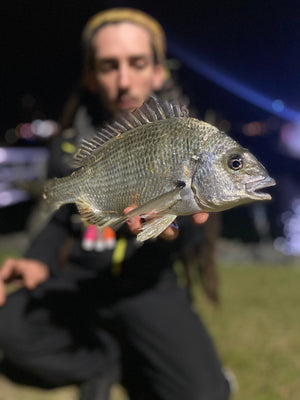
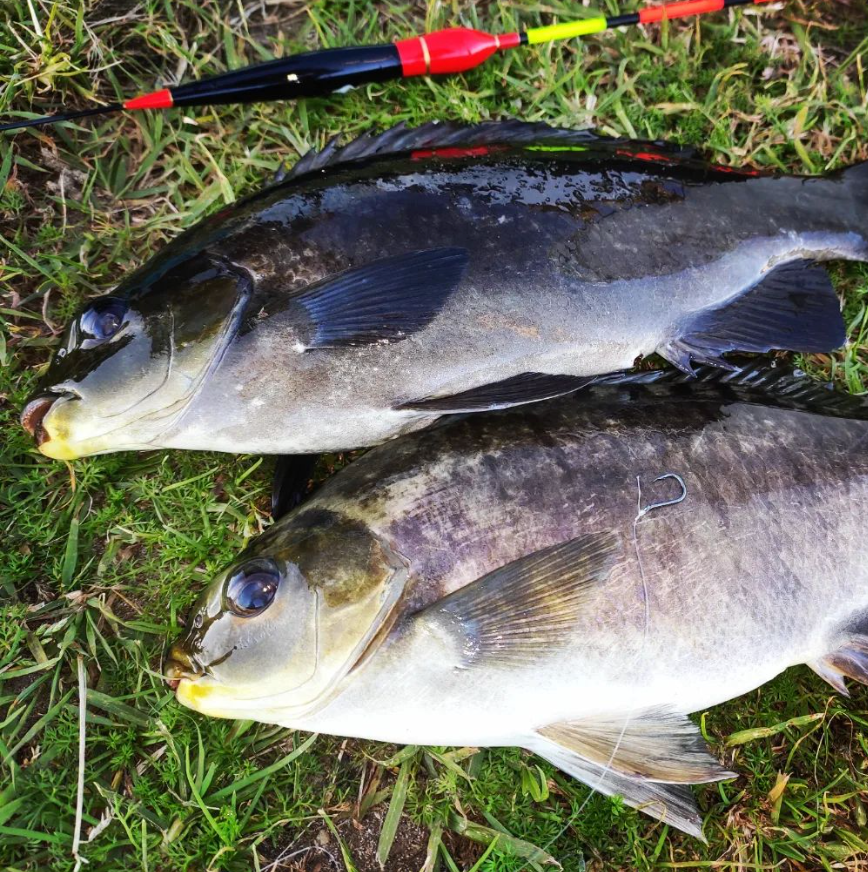
Leave a comment